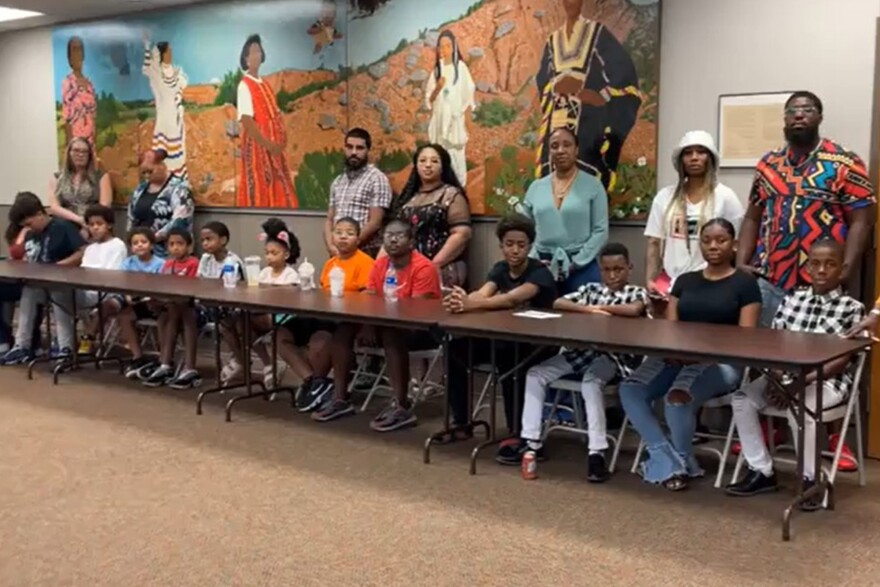By: Toluwani Osibamowo from kttz.org
It was only a month into the school year when Tracy Kemp said her son was being bullied at Laura Bush Middle School.
Kemp and her family moved to Lubbock last February from Michigan. School returned to in-person instruction that fall, and in September, her oldest son told her some classmates were taunting him, calling him a monkey. Kemp and her family are Black.
After several emails and meetings with the school’s administration, the student at fault was warned not to speak to Kemp’s son. She began hearing less and less about the bullying.
“So in our eyes, we thought it was getting better,” Kemp said. “But that all came falling apart when we got the text message on that morning about the Instagram post.”
In April, an anonymous Instagram page using the Lubbock-Cooper Pirates logo surfaced. On it were pictures with racist captions of Black students who attended Laura Bush Middle School.
Kemp’s son was posted on the page, and he showed it to his mom. She immediately asked family and friends to report the page and soon met with other parents whose children were also posted. Kemp said she was sick to her stomach. She also said the school’s administrators did not notify her or other parents about it.
“A middle school child who is already a minority in the school, and now all nine of those children — or 10 — that were on there, you know, they probably feel some type of way, because that is humiliating,” Kemp said.
Cyberbullying has been an issue since the biggest social media platforms came on the scene; what’s changed is the way people are using these sites to target others on the internet and in real life.
The recent Buffalo and Uvalde mass shootings cast a spotlight on gun violence. But they also showed how social media and bullying might push a person to take online conflict a step further. Parents, administrators and students are now pushed to question how prepared schools are to prevent bullying and racism from escalating into higher-scale violence.
Taye Lang, 14, was another student posted on the Instagram page. He said he was angry when his mom first showed it to him.
“Why would you want to see your face on there when it’s based off something racist when that’s supposed to be long past ago?” Lang said.
This isn’t the first time Lang felt he was a victim of racism at school. Coming to Laura Bush in the middle of seventh grade, he said it’s been hard getting used to not seeing many students who look like him.
His mother Cierea Harris said she was frustrated with how administrators said they would handle the situation.
“A lot of people say they got these procedures in place, but in reality, just because it’s not happening yet, it’s like, a lot of people just get lazy and drop that ball,” Harris said.
In an updated statement, Lubbock-Cooper ISD’s Superintendent Keith Bryant said the administration notified all parents of the incident. It’s still unknown who was behind the page, but Bryant said they will face maximum consequences. The page was taken down soon after the school found out about it.
One of the district’s improvement efforts listed in the statement is staff training on how to recognize and address racist behavior. This is something Irma Almager, an assistant professor at Texas Tech and a former principal, said is necessary.
“If I’m a culturally responsive teacher, then I have a responsibility to ensure that all my students are safe,” Almager said. “And so, my responsibility is to look for those little things.”
Implicit bias can play a role in how bullying is addressed, Almager said. In a district like Lubbock-Cooper, which had a total of five Black teachers during the 2020-2021 school year, the intersection between race and disciplinary action is an important consideration.
She said school policies haven’t been able to keep up with social media. In her experience, the administration’s hands are tied when it comes to behavior outside school grounds — that includes what happens online.
“But we also, as educators, need to make sure that we let parents know that we’ve done a due diligence in investigating, and sometimes I don’t think we communicate that to parents,” Almager said.
